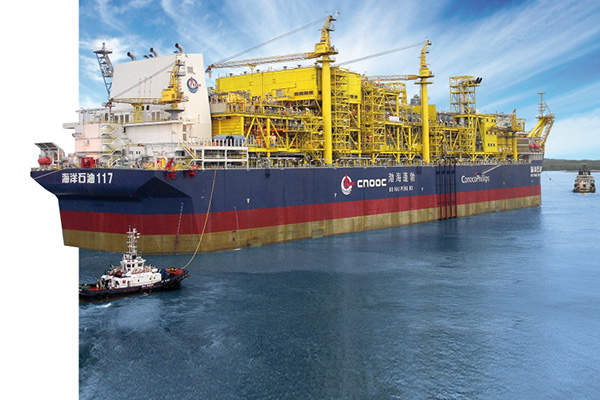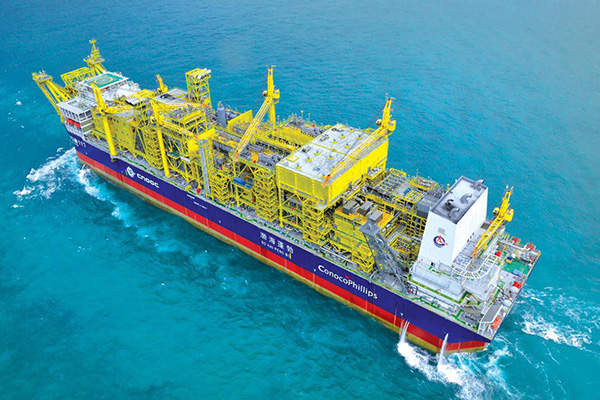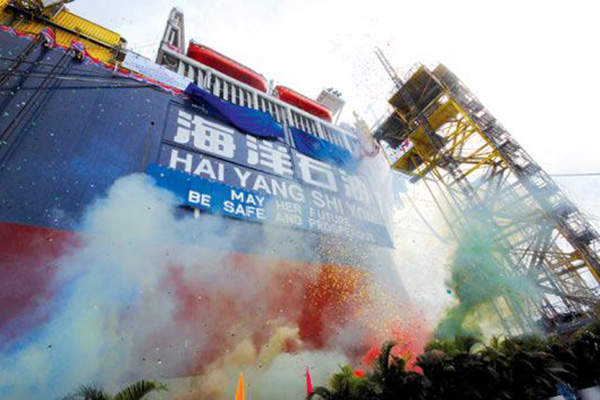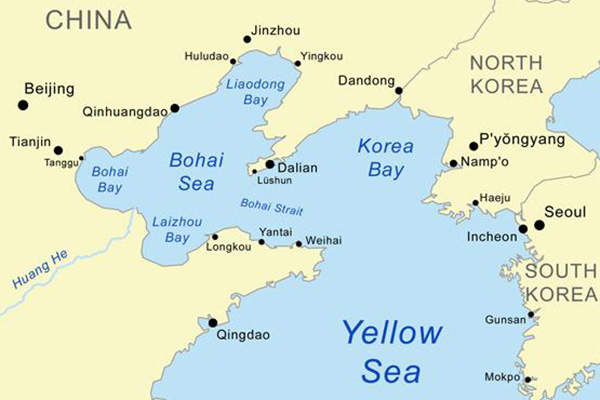
The biggest offshore oilfield and the second biggest oilfield in China, the Penglai 19-3 Oilfield is located in Block 11/05 of Bohai Bay, approximately 235km south-east of Tanggu.
The production sharing contract (PSC) for block 11/05 was signed between China National Offshore Oil Corporation (CNOOC) and ConocoPhillips China (COPC) in December 1994. CNOOC holds 51% while COPC holds 49% interest in the project. In July 2014, CNOOC took over the operatorship of the field from COPC.
The oilfield was developed in two phases. Production from Phase I started in December 2002 and the overall development programme (ODP) for the Phase II was approved in January 2005. Production from the wellhead platform (WHP) C, which is tied back temporarily to the production facilities of Phase I, began in June 2007.
Two incidents of oil spillage were reported in June 2011, following which production from the field was suspended in September. The production resumed in February 2013, after the grant of approvals for the revised ODP and an environmental impact assessment (EIA) report were submitted by COPC to the State Oceanic Administration (SOA).
Penglai 19-3 discovery and geology
The oilfield was discovered jointly by the CNOOC and COPC in 1999, through the drilling of the Peng Lai 19-3 discovery well.
Six successful appraisal wells were also drilled, which confirmed the presence of hydrocarbons in reservoirs located within miocene lower minghuazhen and guantao sandstones.
Penglai 19-3 oilfield development details
Phase I of the Penglai 19-3 Oilfield development involved the installation of an early production facility comprised of a WHP tied back to the newly modified and refurbished Ming Zhu FPSO having a production capacity of 40,000 barrels of oil per day. It included the installation of production and water injection pipelines and a submarine power and control cable.
Phase II involved the installation of the Hai Yang Shi You 117, or Bo Hai Peng Bo FPSO, and tieback of five WHPs to a central fixed riser and utility platform. Up to 36 miles (58km) of subsea pipelines were installed to interconnect the platforms to the FPSO.
Hai Yang Shi You 117 FPSO details
Featuring the world’s biggest topside modules, Hai Yang Shi You 117 has a designed processing capacity of 190,000 barrels of oil a day and 510,000 barrels of fluid. Its storage capacity is two million barrels.
The FPSO measures 323m long and 63m wide and has a moulded depth of 32.5m. Its hull has a dead weight (DWT) of 280,000t and its topsides weigh approximately 35,000t. It is fixed to a 1,600t steel jacket platform via a soft yoke mooring system (SYMS).
The naming and sailaway ceremonies of the FPSO were jointly held in November 2008 and operations started in May 2009. The facility is also designed to accommodate production from the nearby Peng Lai 19-9 and Peng Lai 25-6 fields.
Contractors involved with China’s biggest offshore oilfield
The modularisation of 32,000t of steel into the topside modules and the fabrication works were carried out by SMOE, a subsidiary of SembCorp Industries, whereas the integration of the modules was performed by Sembawang Shipyard.
The FPSO’s hull was constructed by Shanghai Waigaqqiao Shipbuilding (SWS), a subsidiary of China State Shipbuilding Corporation (CSSC), under a $200m contract awarded in March 2005. The hull was designed by Marine Design & Research Institute of China (Maric).
The conceptual engineering, front-end engineering and design (FEED) and detailed engineering works for the Phase II were performed by Flour. The FPSO’s topsides modules design and procurement services for the three WHPs were also undertaken by Flour.
The SYMS was designed and constructed by Bluewater. GEA Westfalia Separator supplied 40 centrifuges, which are integrated into five different applications in the FPSO. Certain engineering services for the FPSO were carried out by Richtech.
The Liwan 3-1 gas field sits in licence block 29/26 in the South China Sea, 350km south-east of Hong Kong.
Emerson Process Management installed its proprietary PlantWeb digital automation architecture, including DeltaV digital automation system and field instrumentation systems, such as Rosemount measurement instruments, Daniel metering systems and AMS Suite, on the FPSO and the six platforms as part of the Phase II.
The detailed design, support during construction and commissioning of the FPSO under Phase I were performed by WorleyParsons.
Oil spillage at Penglai 19-3 Oilfield
The first oil spill at the field from PL19 3 WHP B took place on 4 June 2011, due to pressure during water injection into a subsurface reservoir, which led to a crack in an existing geological fault.
The next incident occurred on June 17, 2011, during the drilling of a water injection well at WHP C, where it bumped into an unanticipated high-pressure zone, causing a well kick and temporary loss of well control.
Up to 723 barrels (115m³) of oil spilled and 2,620 barrels (416m³) of mineral oil-based drilling mud seeped into Bohai Bay as a result of the two oil spillage incidents.








